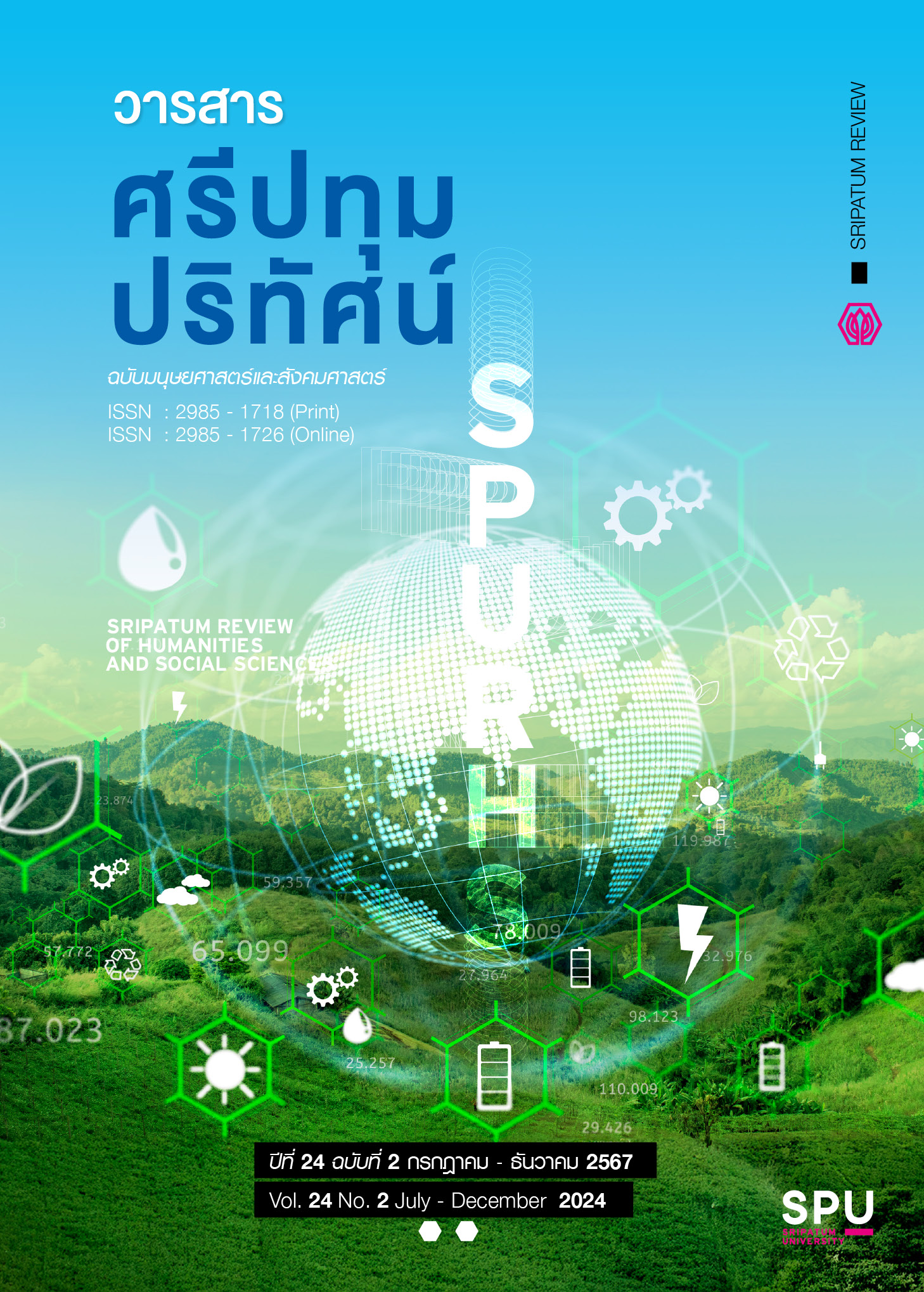Development of a Proper System to Help and Promote Learning for Children in The Street / Street Children in Bangkok Metropolitan Area
Main Article Content
Abstract
This survey research aimed to study the situation and challenges faced by street children in Bangkok and to examine learning activity models for enhancing their potential and providing individualized support systems to promote appropriate learning opportunities. Additionally, it seeks to identify the essential competencies required for street educators and professionals working with street children and to explore strategies for fostering public understanding and communication about the work of educators and organizations serving this group. This includes producing media to promote and publicize the outcomes of such efforts. The study utilized a participatory action research methodology, employing tools such as surveys, questionnaires, in-depth interviews, workshops, and practical trials. The findings revealed that: (1) Situation and Challenges: The situation of street children in Bangkok remains concerning, based on both quantitative and qualitative data. (2) Learning Activity Models and Support Systems: Appropriate models for enhancing potential and providing individualized support include three formats: lifelong learning, self-development learning, and competency-based learning at appropriate levels. Two effective support systems were identified: financial assistance or grants for children and strategies for promoting learning, such as career development activities, lifelong learning opportunities, and equivalency-based learning programs. (3) Essential Competencies for Street Educators and Workers: These include three key areas of competency: attitudes, skills, and knowledge, ranked in order of importance. (4)Public Understanding and Communication: Strategies to improve understanding and communication involve producing and disseminating media about the work of educators and professionals working with street children across all platforms. This aims to raise awareness and interest in addressing the challenges and promoting learning opportunities for street children in society.
Article Details

This work is licensed under a Creative Commons Attribution-NonCommercial-NoDerivatives 4.0 International License.
1. กองบรรณาธิการสงวนสิทธิ์ในการพิจารณาและตัดสินการตีพิมพ์บทความในวารสาร
2. บทความทุกเรื่องจะได้รับการตรวจสอบทางวิชาการโดยผู้ทรงคุณวุฒิ แต่ข้อความและเนื้อหาในบทความที่ตีพิมพ์เป็นความรับผิดชอบของผู้เขียนแต่เพียงผู้เดียว มิใช่ความคิดเห็นและความรับผิดชอบของมหาวิทยาลัยศรีปทุม
3. การคัดลอกอ้างอิงต้องดำเนินการตามการปฏิบัติในหมู่นักวิชาการโดยทั่วไป และสอดคล้องกับกฎหมายที่เกี่ยวข้อง
References
Ampairat, A. (2002). Communication Between Street Teachers and Street Children: A Case Study of the Area Under Arun-Amarin Bridge, Bangkok Noi District, Bangkok. Thesis of the Degree of Master Program. Nonthaburi: Dhurakij Pundit University.
Equitable Education Fund. (2019). Equity Education Fund (EEF) Reports 23,382 Out-of-School Children Re-Enrolled in Education. [Online]. Retrieved from: https://voicetv.co.th/ read/xrl1j90pW
Imsuwan, C. (2009). Five Preliminary Agreements Before Becoming a Non-Formal Education Student. [Online]. Retrieved from: https://www.moe.go.th
Jarungkiattikul, S. (2018). The Twenty-First Century Skills. [Online]. Retrieved from: https://www.trueplookpanya.com/blog/content/66054/-teaartedu-teaart-teaarttea
Jitradub, S. S., & Mohammadraksaphon, D. (2020). Knowledge for understanding street children. [Online]. Retrieved from: https://www.matichon.co.th/article/news_1928722
National Child and Youth Development Promotion Board. (2018). The Second National Child and Youth Development Plan, 2017–2021 (incorporating the Second National Action Plan for Child and Youth Development, 2017–2021) (2nd Edition). Bangkok: J.S. Printing Press.
Office of the National Education Commission. (2002). National Education Act B.E. 2542 (1999) and Amendments (Second Edition) B.E. 2545 (2002). Bangkok: Prikwarn.
Office of the Permanent Secretary, Ministry of Education. (2008). Non-Formal and Informal Education Promotion Act, B.E. 2551. Bangkok: Ministry of Education.
Paosopa, J. (2004). Writing Competency Standards. Bangkok: Vocational Education Research and Development Center, Department of Vocational Education.
Sibmeunpiam, N. (1992). A model for helping street children in Thailand: A delphi study. Thesis of the Degree of Master’s Program. Bangkok: Chulalongkorn University.
Servaes, J. (2003) Approaches to Development; Studies on Communication for Development Paris: UNESCO
Sukhothai Thammathirat Open University. (2015). Concepts and Theories of Communication for Development in Course Materials for Communication and Development, Units 1–8. Nonthaburi: Sukhothai Thammathirat Open University.
Surakhajorndej, L. & Yoosaaard, N. (2017). Behavior and migration of street children: A case study of Khon Kaen Municipality, Khon Kaen Province. The Proceedings of the 13th Mahasarakham Research Conference. Mahasarakham University, Thailand.
Thammawithikun, A. (2010). Non-Formal and Informal Education in the Present Day. [Online]. Retrieved from: https://panchalee.wordpress.com/2010/12/21/nfe_ac1/
The Office of the United Nations High Commissioner for Human Rights (OHCHR) (2017) Rights of Children in Street Situations General Comment No.21 (2017) on Children in Street Situations. [Online]. Retrieved from: https://www.streetchildren.org/resources/ rights-of-children-in-street-situations-general-comment-no-21-2017-on-children- in-street-situations/


